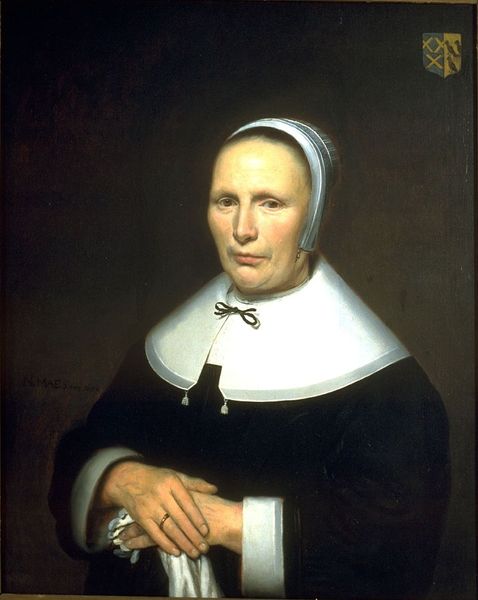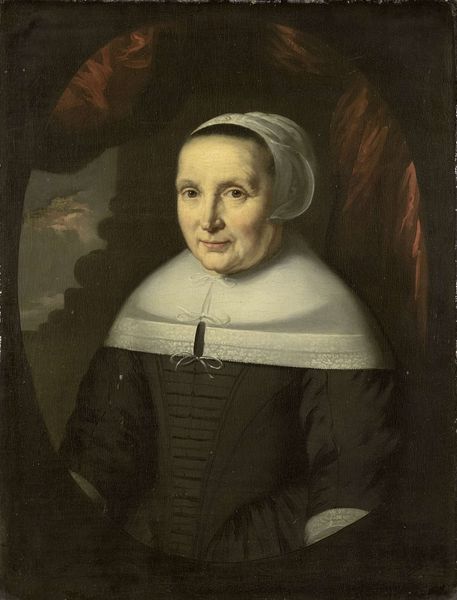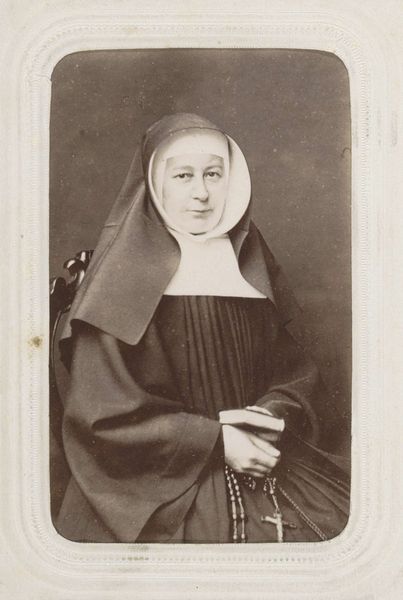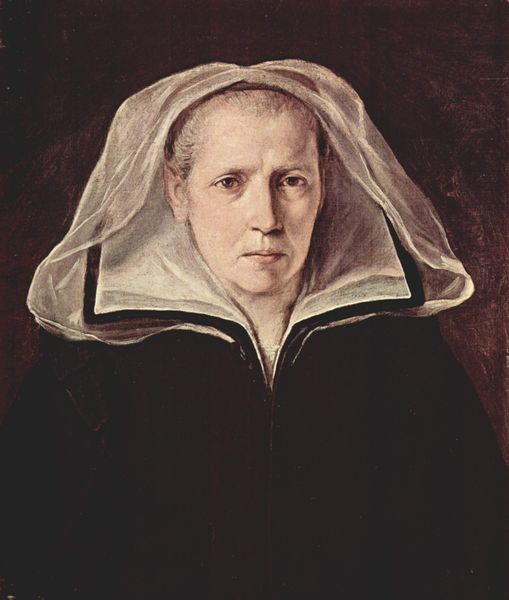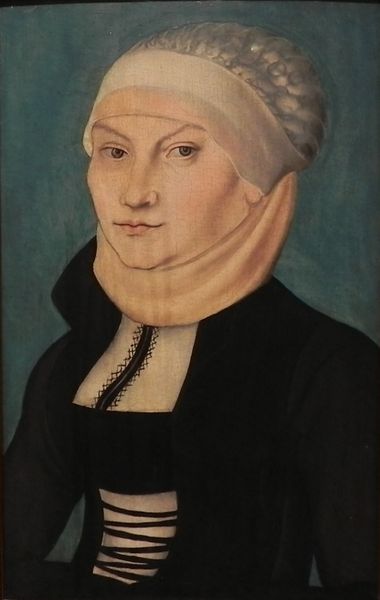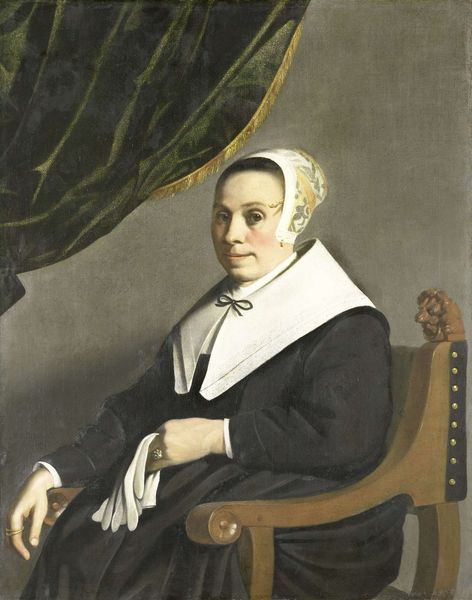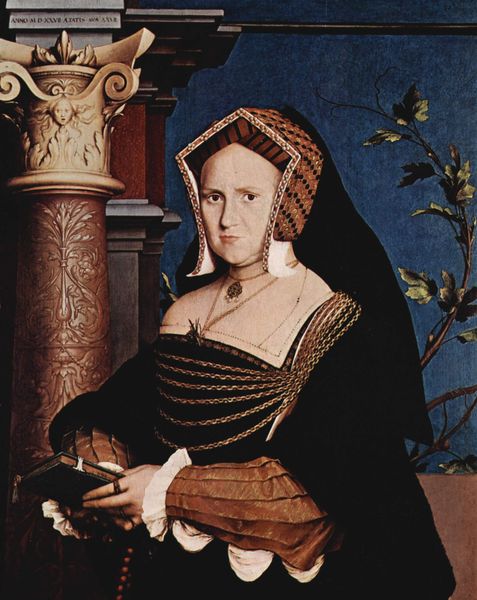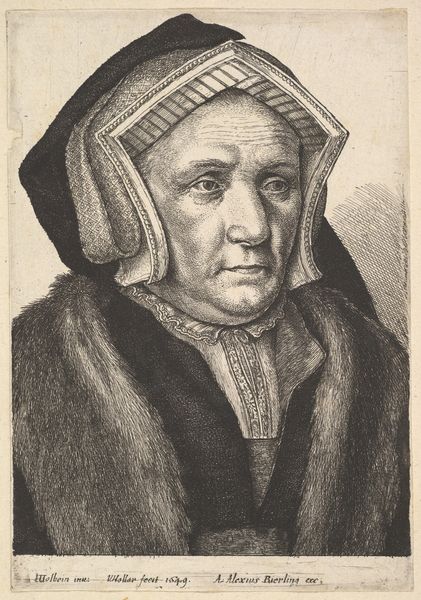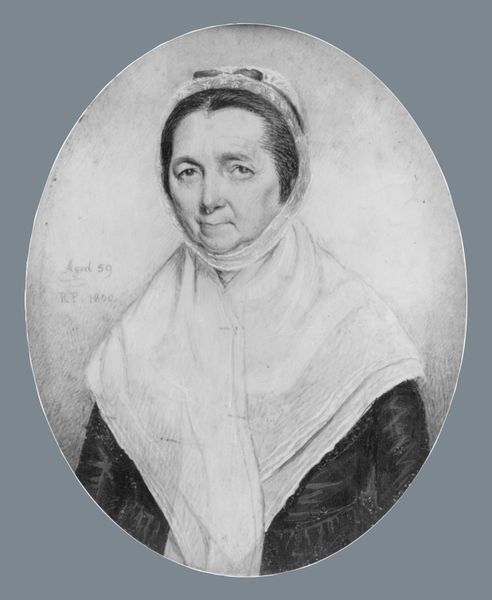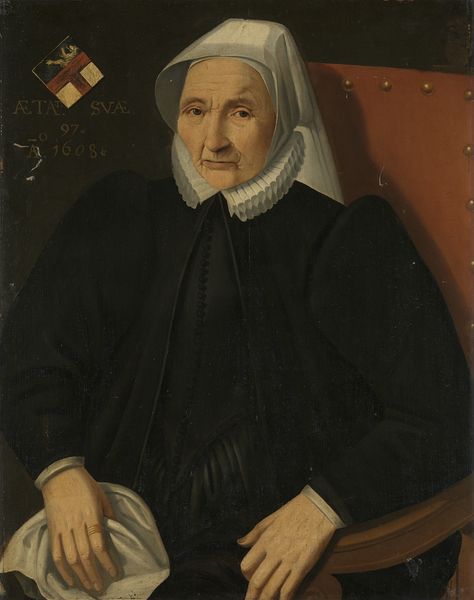
oil-paint
#
portrait
#
oil-paint
#
11_renaissance
#
northern-renaissance
Dimensions: 46 x 37 cm
Copyright: Public domain
Curator: Holbein the Younger’s "Lady Butts," painted in 1543, is arresting, isn't it? Editor: It is quite something. Stark and formal, almost severe. What is striking is her fur stole, luxurious! Curator: Absolutely, the texture of the fur is incredibly rendered, especially when you consider he’s using oil paint. Holbein really knew his materials, didn’t he? And, in thinking about the means of production at the time, that fur was a significant marker of wealth. It signals consumption patterns and social standing as surely as any tiara today. Editor: Indeed, and Holbein's skill in depicting such finery served a specific social function. Portraits like this weren’t just pretty pictures; they solidified the status of individuals within the complex social hierarchy of Tudor England. Think about the power dynamics inherent in commissioning such a work, a tangible display of patronage and affluence within the political landscape. Curator: You are right, and what about the underlayer and linen used as a base for this piece? Someone had to process this material from natural sources; skilled workers had to weave and cut and sew; how do all those things contribute to how the painting exists? Editor: Precisely! These elements are never neutral. How do you see the role of museums in presenting figures of historical power that, like Lady Butts, derived from elite backgrounds, when the museum’s role is to democratize culture? Curator: That is a good question. The choice of presentation styles, as well as accessibility in content matter should really consider their role in history and what it means for viewers encountering these pieces in the modern day. I wonder if more should be said about who did the labor behind this painting? From Holbein, to all of his materials. Editor: I agree completely. It also compels me to rethink assumptions about visual literacy—whose stories are validated and who holds cultural power through artistic representations. Curator: I now appreciate Holbein's mastery and the complex historical currents it embodies. Editor: A rich reminder that artworks exist not in a vacuum, but in dynamic relation to shifting cultural power structures.
Comments
No comments
Be the first to comment and join the conversation on the ultimate creative platform.

